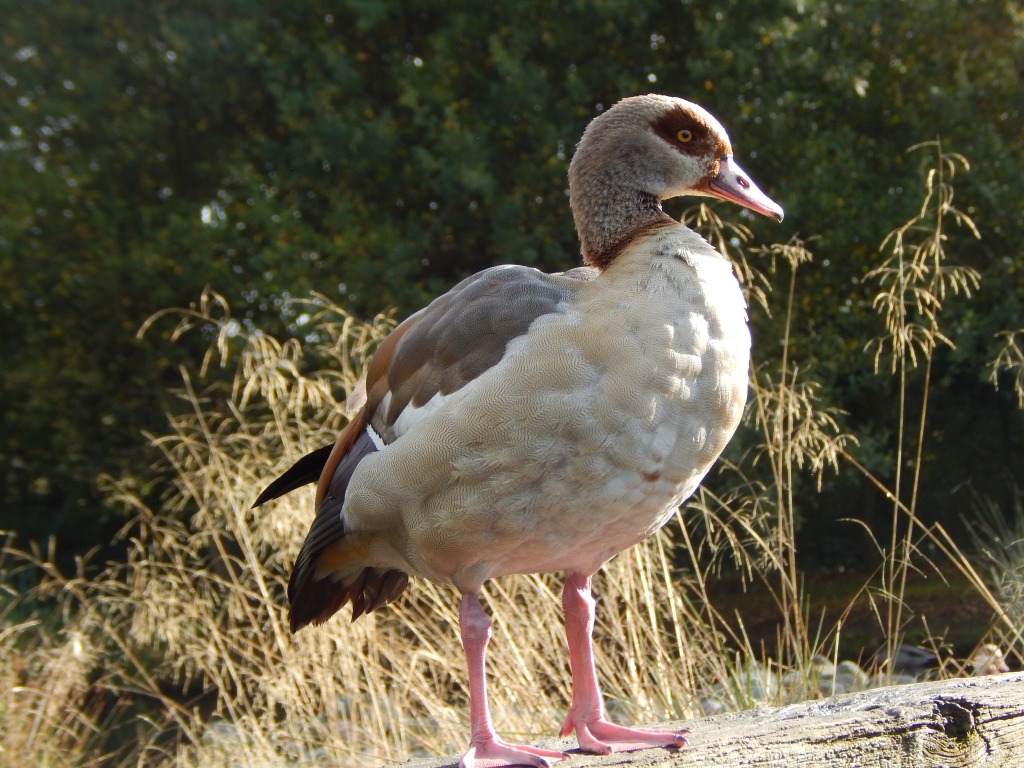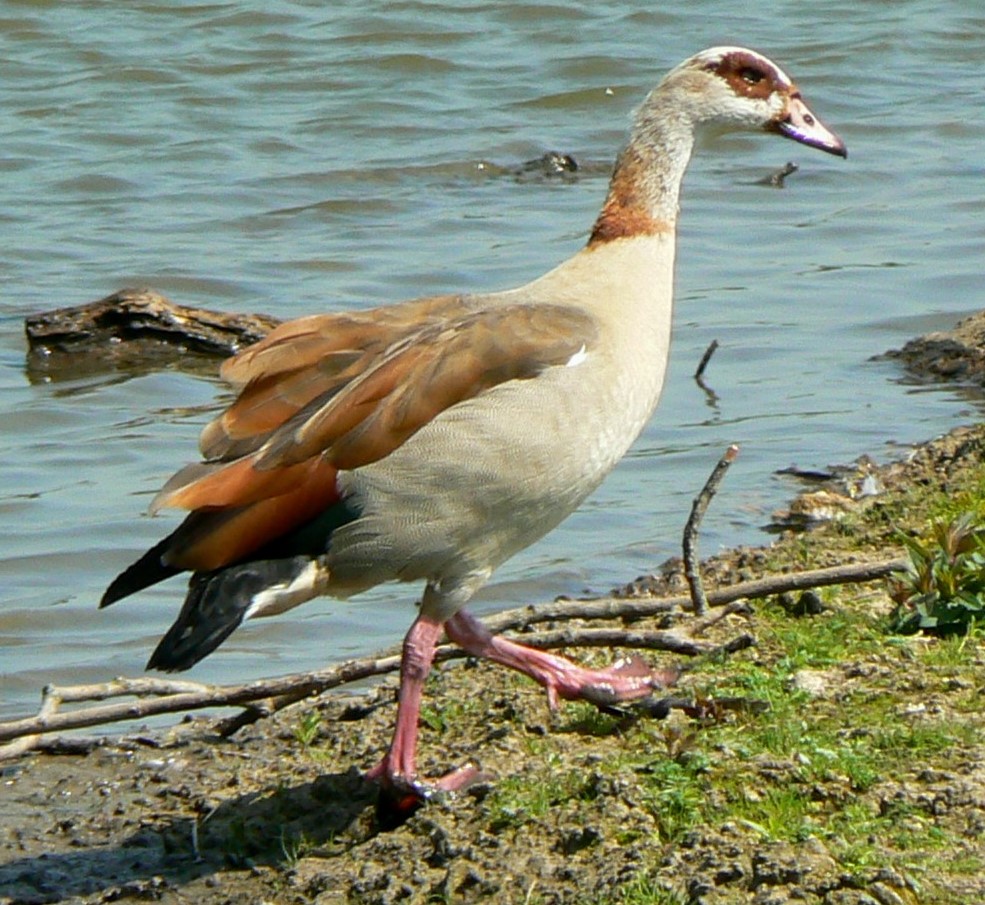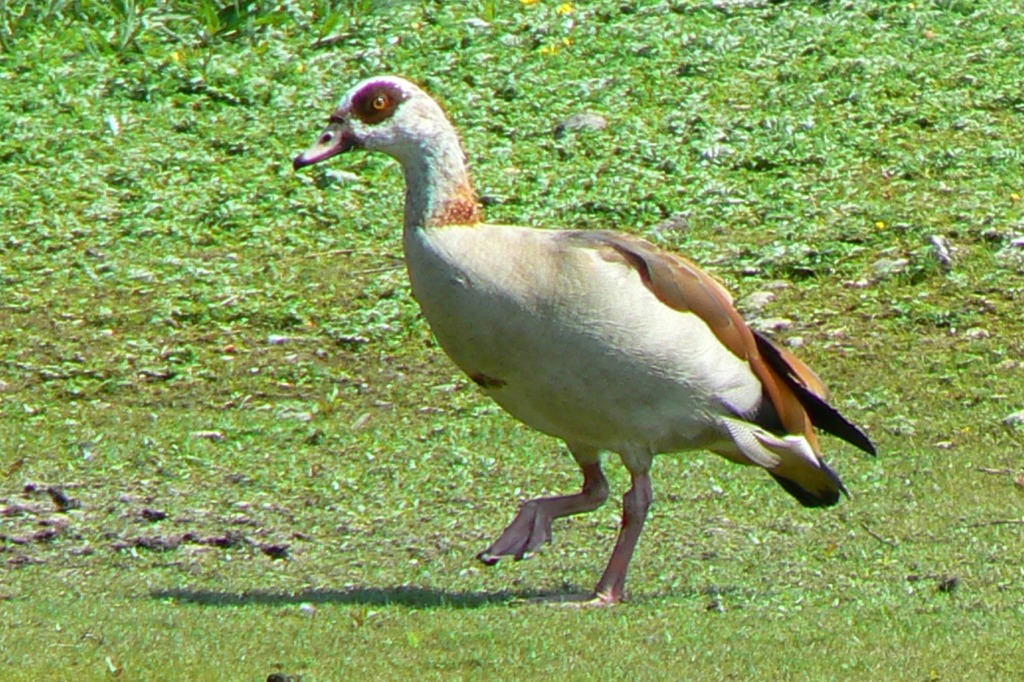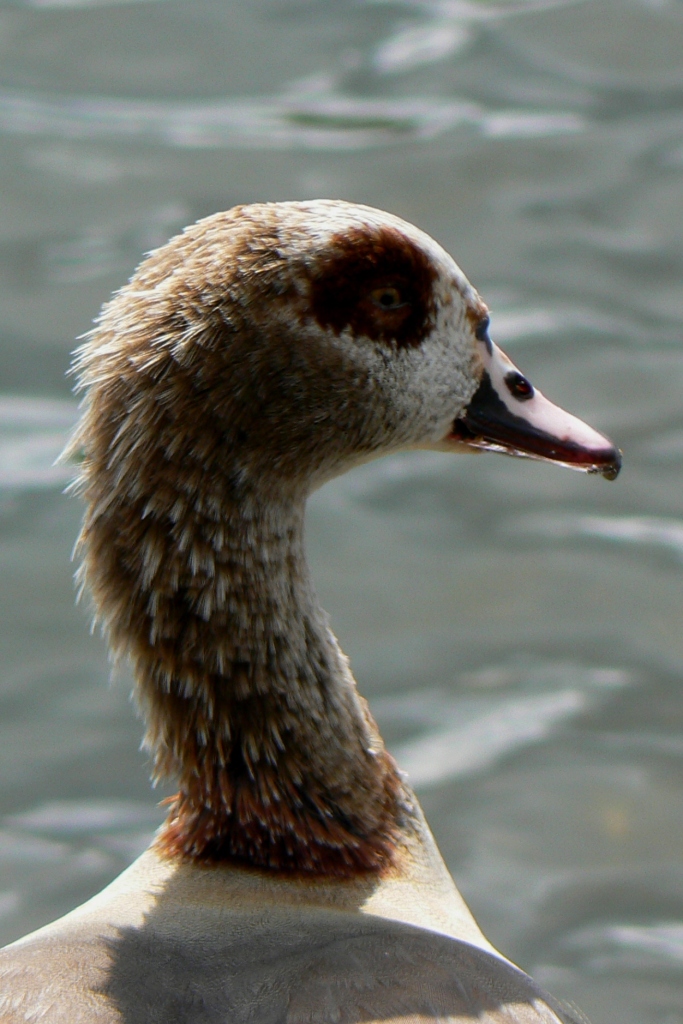
[018] Alopochen aegyptica, Egyptian Goose
Introduction
Alopochen aegyptica, the Egyptian Goose is a waterfowl but it’s not a goose! It is a shelduck, intermediate between ducks and geese.
It is a colourful bird, native to Africa that is now an established British resident bird, probably mostly from escaped birds in ornamental collections.
Taxonomy
Kingdom – Animals
Phylum – Chordates
Class – Birds
Order – Anseriformes (Ducks, geese and swans)
Family – Anatidae (Ducks, geese and swans)
Subfamily – Tadordinae (Shelducks and Sheldgeese)
Genus – Alopochen
Scientific Name – Alopochen aegyptica
Name
You can understand why it is called an Egyptian Goose.
If you think the division between ducks and geese is just about size, wait for [061] the Muscovy Duck, which is bigger.
Alopochen comes from Greek roots as ‘fox-goose,’ from the ruddy colour of its back.
Ducks, Geese and Swans
There is no easy way to distinguish between what we call ducks, geese and swans. As a first approximation (with some odd exceptions and not worrying about extinct species) you can divide the family Anatidae into these subfamilies.
- Swans and Geese
- Shelducks and Sheldgeese.
- Diving Ducks
- Dabbling Ducks
- Sea Ducks
There are a significant number of species whose precise subfamily is unresolved or disputed.
Alopochen is in the Shelducks and Sheldgeese subfamily, which includes some birds called Shelducks, some called Sheldgeese, some called Ducks and the Egyptian Goose. I won’t go into detailed distinctions but this group is intermediate between geese and dabbling ducks.
You can understand the confusion when you look at the genus Alopochen, which has another three or four species, all extinct. One of them is called a shelduck, one is called a sheldgoose, and one has two names – a sheldgoose or a goose!
Description
Whatever it is called, the Egyptian Goose is a colourful bird. Unlike our fairly colourful ducks both the male and female have identical plumage. There are various shades of brown and grey.
A large part of the wings is actually white but this is not normally visible except when alarmed or aggressive or in flight.


Habitat
The native range of Alopochen aegyptica is the Nile valley and the whole of sub-saharan Africa. (The three extinct species in the genus came from the African islands of Madagascar, Mauritius and Reunion.)
There have been Egyptian Geese in Britain since the Eighteenth Century but the species was not added to the official British List until 1971. (The British Ornithological Union is well-known for its reluctance to accept bird populations from escaped or feral birds!)
They are found throughout Britain but mostly in East Anglia. I have played golf on a course in Norfolk where my first shot would aim to clear a small lake inhabited by breeding Egyptian Geese. (Don’t worry. My golf wasn’t that good but no Egyptian Geese were harmed in the process.)

It has recently been declared a non-native species with gives it a less protected status in the UK than most birds.
They are fairly herbivorous, eating seeds, leaves and grass, sometimes small invertebrates. Only very young goslings are aquatic, feeding on aquatic plankton.


They nest in many locations, often using holes in trees.
Other Notes
I suspect that those I see are a mixture of wild and domesticated. Ornamental lakes with ducks, coots and moorhens obviously make attractive locations for an escaped or wild bird, especially when regularly visited by food bearing human visitors.

See also
Their closest relatives are [336] Shelducks but they have much in common with [061] the Muscovy Duck.
If you wait until December you can find out why shelducks are called shelducks.
… OK, I will tell you now. ‘Sheld’ is a dialect word for variegated or spotted. They do tend to be colourful like the Egyptian Goose.
